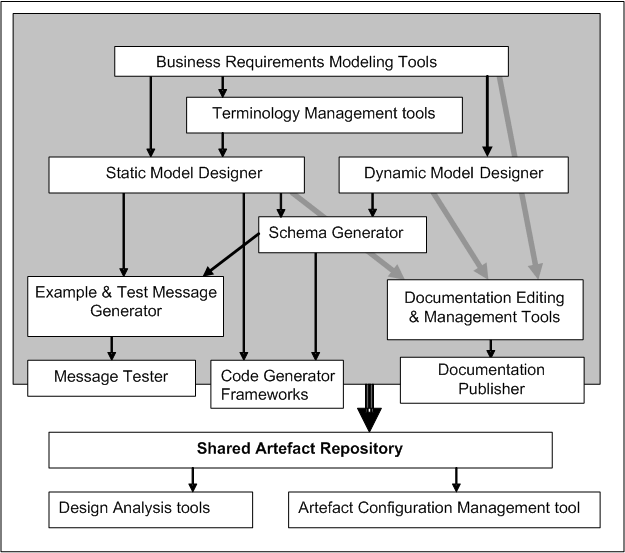HTC Tools Roadmap
Introduction
The HL7 Tooling Collaborative has been established with resource contributions from key HL7 stakeholders, to deliver significant benefits within 1 year of the project's initiation. This collaboration will enhance and integrate current initiatives by various stakeholders. A business model and project organisation, as well as a high-level technical architecture for tools, are described in separate documents.
Tools 'vision'
In general, the HL7 / NHS Collaborative Tools Project envisions tooling that:
- produces machine-processable artefacts, spanning through all stages of the message design cycle (requirements, design, implementation and testing)
- supports end-to-end automated testing of interoperability solutions
- standardises the type and quality of the information conveyed between each stage and between communicating organisations
- produces coherent, traceable and versioned concepts from analysis to implementation
- facilitates direct involvement / feedback in international standards and tools development, ensuring ongoing alignment of implementation specifications with industry standards, including HL7 V3
- reduces message development time, allowing the automatic translation of message designs to supplier-specific formats
- facilitates consistent workflows and project management / oversight
- provides a framework for publishing documentation about the artefacts generated throughout the process.
A potential summary view of tools required to accomplish the vision is provided in Figure 1. The flow indicated with arrows represents the progression through stages of the process. Feedback flows are not represented in this diagram.
 Figure 1. Summary of potential tools with flows representing general progression through message development and implementation stages
Figure 1. Summary of potential tools with flows representing general progression through message development and implementation stages
Dependencies
Some of the tools listed above have dependencies either on other tools (e.g. represented by input flows in Figure 1), or on design decisions required for other tools.
- All tools must be able to easily interoperate and should be orthogonal. The interoperability layer that underpins this toolset is a prerequisite for all design.
- The HL7 Model Designer must be able to accept input from the Business Requirements Analysis tool, as well as feedback from the Message Tester, and the Example & Test Message Generator.
- The Code Generator requires output from the HL7 Model Designer and Schema Generator
- The Example & Test Message Generator requires the HL7 Model Designer and Schema Generator
- The Message Tester requires output from the HL7 Model Designer, Schema Generator and Share Artefact Repository (with stored Test Messages)
- The Shared Artefact Repository needs clear guidelines on types/defining attributes of artefacts